In the digital age, we are spoiled for choice when it comes to entertainment. From streaming services to online video rentals, the options seem endless. But have you ever wondered what VOD stands for? This blog post will delve into the world of Video on Demand, explaining its meaning, history, and impact on our entertainment consumption habits.
What Does VOD Stand For?
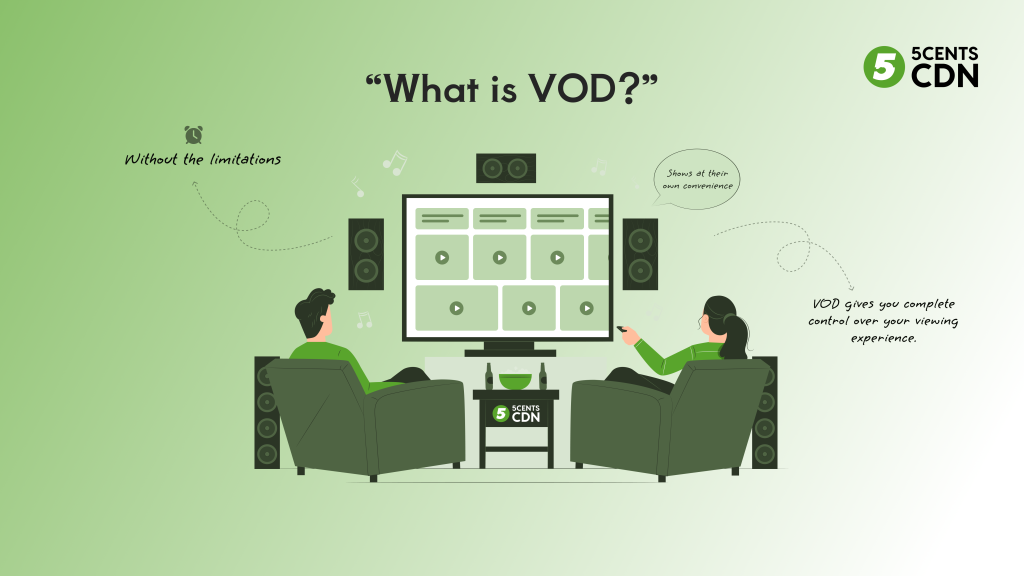
What VOD stands for is Video on Demand. It’s a technology that allows users to watch videos, movies, or TV shows at their own convenience, without the limitations of traditional broadcast schedules. Unlike cable TV, where you have to watch programs at a specific time, VOD gives you complete control over your viewing experience.
The History of VOD: From Humble Beginnings to Streaming Giant
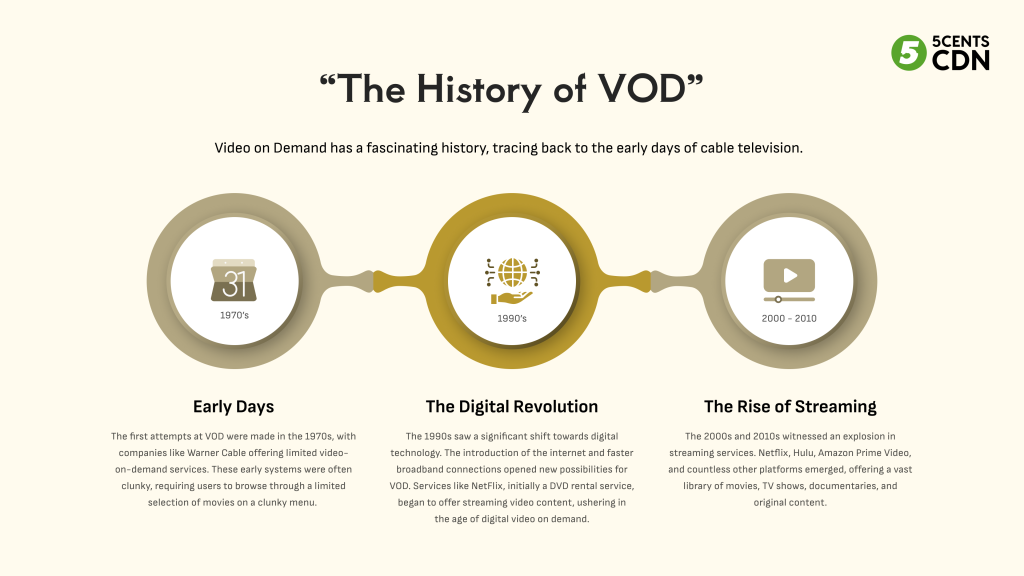
Video on Demand has a fascinating history, tracing back to the early days of cable television. But what VOD stands for today has evolved significantly from its early iterations.
Early Days:
The first attempts at VOD were made in the 1970s, with companies like Warner Cable offering limited video-on-demand services. These early systems were often clunky, requiring users to browse through a limited selection of movies on a clunky menu.
The Digital Revolution:
The 1990s saw a significant shift towards digital technology. The introduction of the internet and faster broadband connections opened new possibilities for VOD. Services like NetFlix, initially a DVD rental service, began to offer streaming video content, ushering in the age of digital video on demand. This era helped solidify what VOD stands for in the modern context.
The Rise of Streaming:
The 2000s and 2010s witnessed an explosion in streaming services. Netflix, Hulu, Amazon Prime Video, and countless other platforms emerged, offering a vast library of movies, TV shows, documentaries, and original content. These platforms truly defined what VOD stands for in the current digital landscape.
How Does VOD Work?
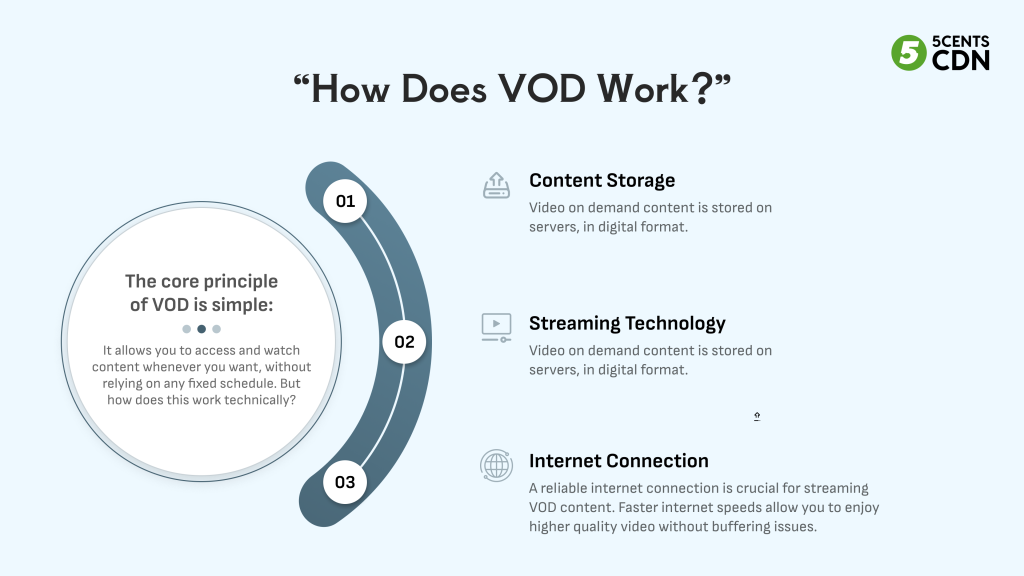
The core principle of VOD is simple: it allows you to access and watch content whenever you want, without relying on any fixed schedule. But how does this work technically?
Content Storage: Video on demand content is stored on servers in a digital format.
Streaming Technology: When you select a video, the platform uses streaming technology to send the video data directly to your device (computer, phone, tablet, or smart TV).
Internet Connection: A reliable internet connection is crucial for streaming VOD content. Faster internet speeds allow you to enjoy higher quality video without buffering issues.
Benefits of VOD
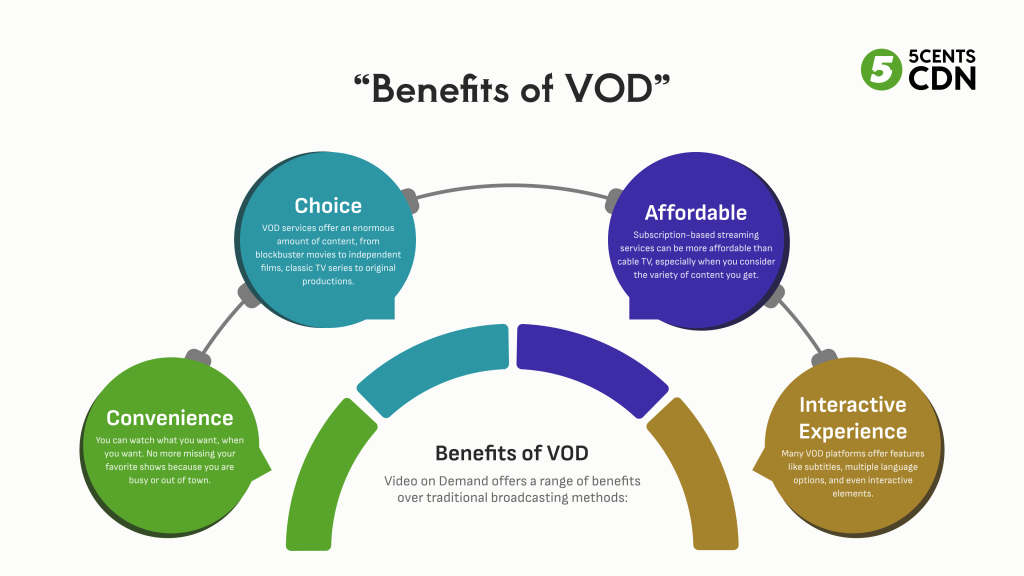
Video on Demand offers a range of benefits over traditional broadcasting methods:
Convenience: You can watch what you want, when you want. No more missing your favorite shows because you are busy or out of town.
Choice: VOD services offer an enormous amount of content, from blockbuster movies to independent films, classic TV series to original productions.
Affordable: Subscription-based streaming services can be more affordable than cable TV, especially when you consider the variety of content you get.
Interactive Experience: Many VOD platforms offer features like subtitles, multiple language options, and even interactive elements.
The Impact of VOD
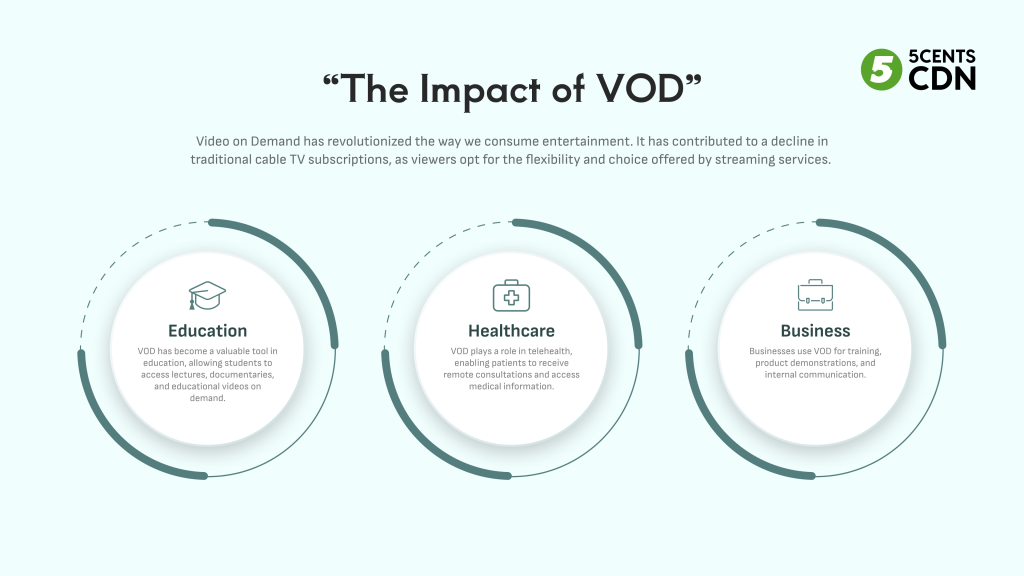
Video on Demand has revolutionized the way we consume entertainment. It has contributed to a decline in traditional cable TV subscriptions, as viewers opt for the flexibility and choice offered by streaming services.
The impact of VOD extends beyond entertainment:
Education: VOD has become a valuable tool in education, allowing students to access lectures, documentaries, and educational videos on demand.
Healthcare: VOD plays a role in telehealth, enabling patients to receive remote consultations and access medical information.
Business: Businesses use VOD for training, product demonstrations, and internal communication.
The Future of VOD: What Will VOD Stand For Tomorrow?
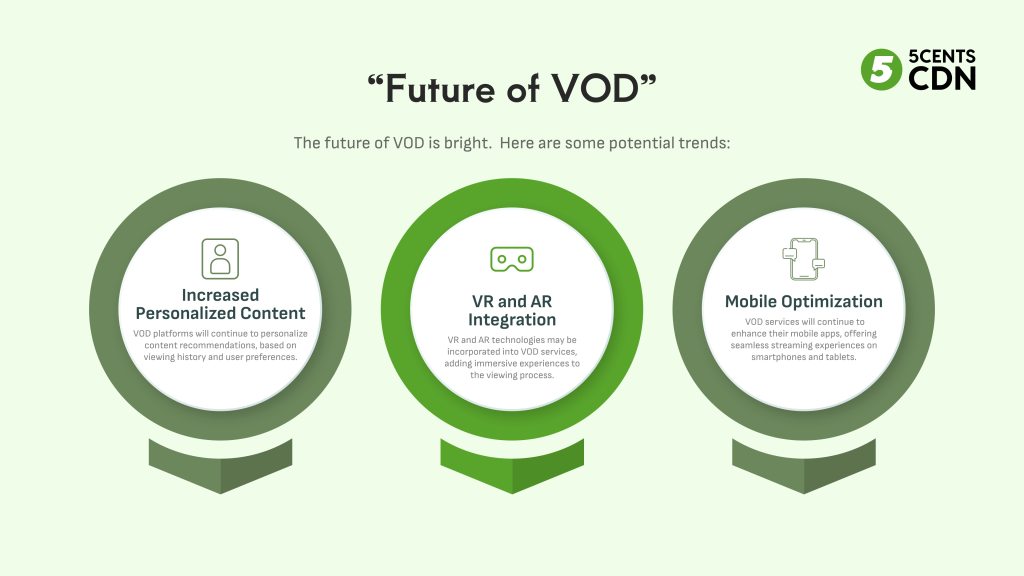
The future of VOD is bright. Here are some potential trends:
Increased Personalized Content: VOD platforms will continue to personalize content recommendations based on viewing history and user preferences.
VR and AR Integration: VR and AR technologies may be incorporated into VOD services, adding immersive experiences to the viewing process.
Mobile Optimization: VOD services will continue to enhance their mobile apps, offering seamless streaming experiences on smartphones and tablets.
Conclusion
Video on Demand, as signified by the acronym VOD, has transformed the entertainment landscape and continues to evolve. Its convenience, choice, affordability, and impact on various sectors make it a cornerstone of modern media consumption. Whether you are enjoying a movie night at home or catching up on your favorite TV show on the go, VOD offers an unparalleled experience that keeps us connected to the world of entertainment like never before.